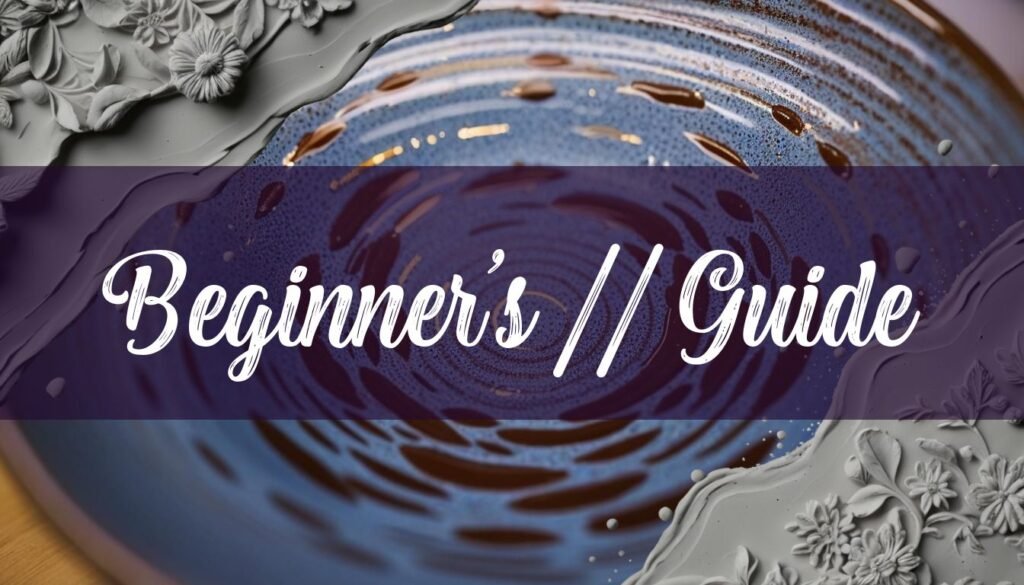To embark on the journey of pottery, a few essential things are needed to transform simple clay into beautiful, functional, or decorative art. This article aims to guide beginners through the necessary tools and equipment, ensuring a smooth start to their pottery adventure.
Clay: The Foundation of Pottery
The most fundamental requirement for pottery is, of course, clay. Clay is categorized into several types, each with unique properties and firing temperatures. Earthenware clay is a popular choice, known for its high plasticity, which makes it easy to manipulate and work with, maturing at lower firing temperatures between 950°C and 1,100°C (Soul Ceramics). Stoneware is another versatile option, favored for its smooth texture, plasticity, and structural strength, making it suitable for both wheel throwing and hand building, and it can beautifully showcase colors from underglazes and glazes (Seattle Pottery Supply). Stoneware typically fires at a higher temperature range, between 1000°C and 1380°C (Soul Ceramics). Porcelain clay, sometimes referred to as kaolin, fires to a bright white color and has no grit, but it can be more challenging to work with due to its finicky nature (Seattle Pottery Supply). Air-dry clay is an alternative that hardens naturally without the need for firing, making it perfect for beginners and small-scale projects, though it’s less durable than fired clay (ClayMoo). For beginners, a white or off-white stoneware is generally recommended due to its forgiving nature and ability to take color well (Seattle Pottery Supply). When selecting clay, consider the project goals and skill level to ensure the best possible outcome (Kiln Fire). For more information, check out this article on what type of clay is used for ceramics. You may also want to consider making your own, by reading how to make clay for pottery.
Tools and Equipment for Shaping and Refining Clay
While hands are the primary tools for pottery, certain instruments enhance the shaping and refining process. For those interested in wheel throwing, a pottery wheel is essential. Pottery wheels come in manual and electric versions, each offering different control levels and ease of use. Essential hand-building tools include a variety of sculpting tools for carving and adding details (Slice Products), ribs for shaping and smoothing clay on the wheel (Fowlers Clay Works), and sponges for burnishing and cleaning (Fowlers Clay Works). A needle tool is useful for trimming, etching, and piercing clay (Fowlers Clay Works), while a wire cutter aids in slicing clay and removing pots from the wheel (Fowlers Clay Works). Calipers are crucial for measuring dimensions, especially when creating pieces that need to fit together precisely (Fowlers Clay Works). A fettling knife, with its flexible blade, is excellent for removing mold marks, sculpting, and carving (Slice Products). Other helpful tools include loop tools for trimming and ribbon tools for creating textures and intricate details (Slice Products). A banding wheel is invaluable for hand builders, making it easier to form, attach, decorate, and refine pieces (Naomi Clement Blog). Additionally, an apron and towels are necessary to manage the mess (Fowlers Clay Works).
Glazes and Kilns: Finishing Touches and Firing
Glazes are vital for adding color, sealing the pottery, and making it waterproof. There are many types of glazes, each offering different finishes, such as glossy, matte, or textured. Application methods vary, including brushing, dipping, and spraying. It’s essential to test glazes to understand their fired appearance and ensure they are food-safe if the pottery is intended for culinary use. A good glazing brush is an essential tool for applying glaze (Susan Ohanlon Pottery). Finally, a kiln is required to fire the pottery, transforming the clay into a durable ceramic form. Kilns come in electric and gas varieties, each with different firing capabilities and energy requirements. Factors to consider when choosing a kiln include size, temperature range, and control features. Safety precautions are paramount when operating a kiln, including proper ventilation and protective gear. Common beginner projects include coil pottery, pinch pots, slab pottery, egg cups, candle holders, jewelry dishes, vases, mugs, soap dishes, spoon rests, ornaments, coasters, and beads (Pinterest).
Common mistakes to look out for include improper wedging (Pottery Crafters), using the wrong type of clay, working with clay that is too dry or too wet (Pottery Crafters), incorrect body positioning, applying uneven pressure, using too much water, pushing into the center too quickly, and using the wrong wheel speed (Pottery Crafters). By starting with the right materials and equipment, and by understanding the basics of clay, tools, glazes, and firing, beginners can confidently begin their journey into the world of pottery.





